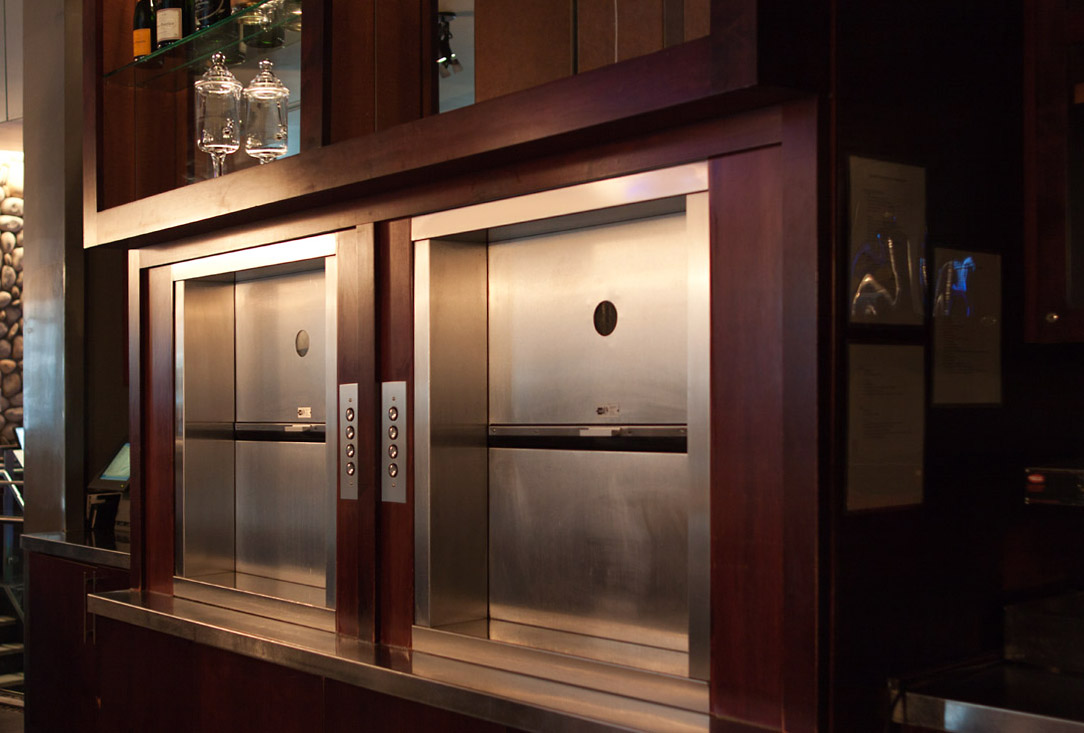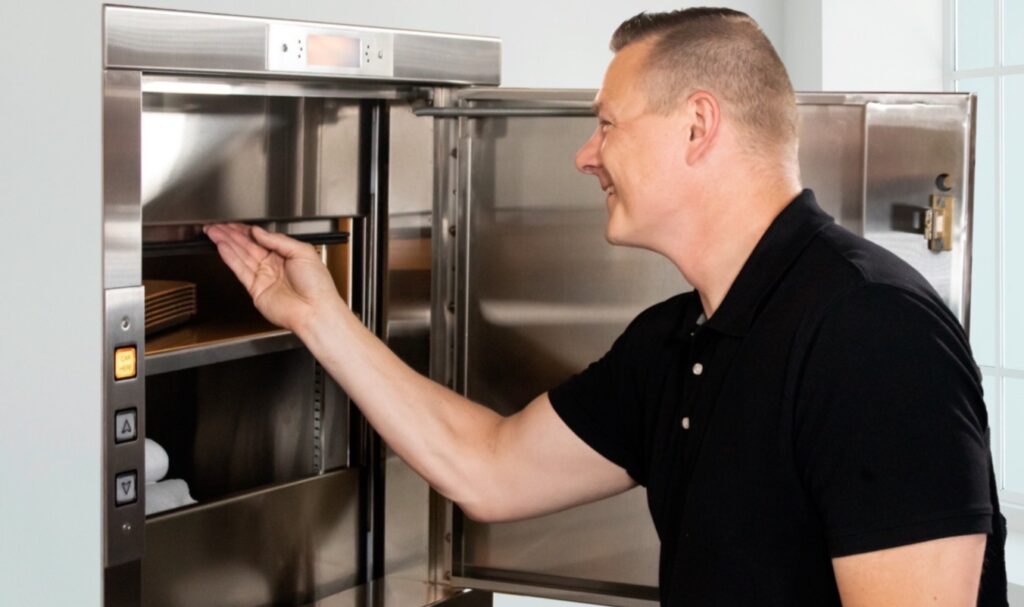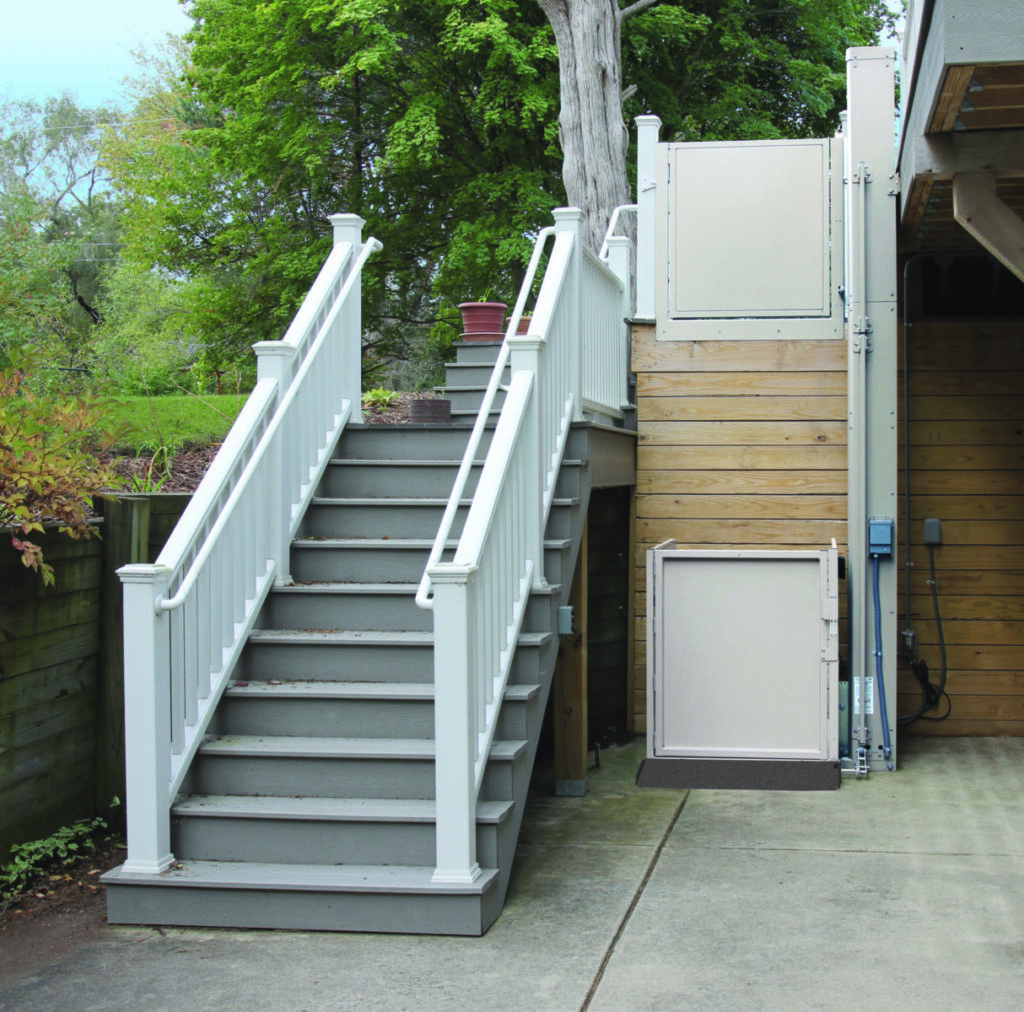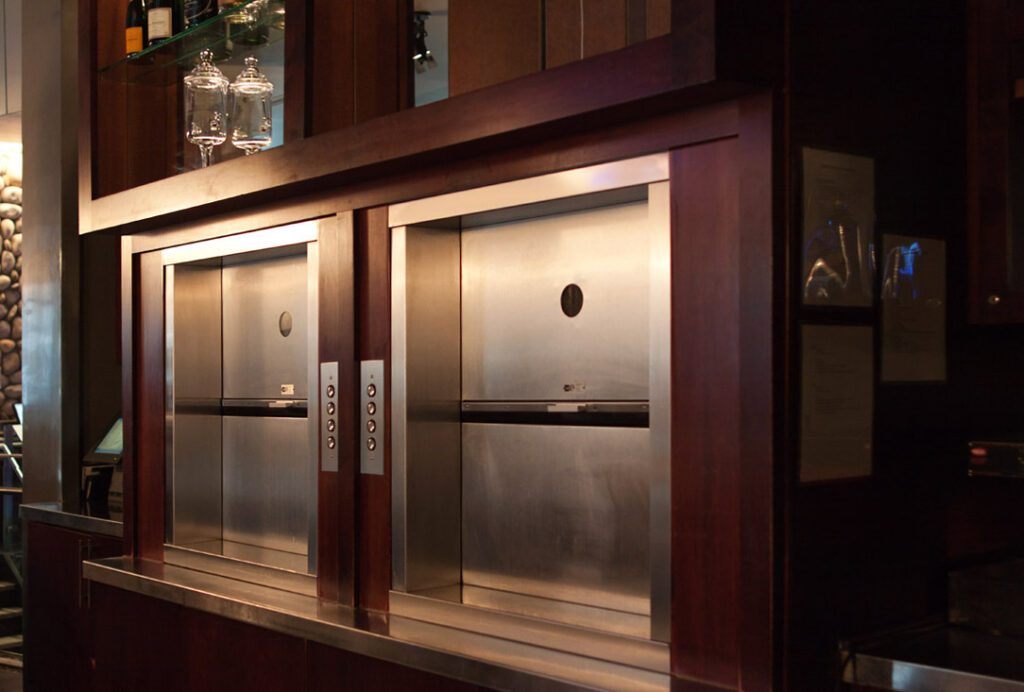
A dumbwaiter is a practical, convenient type of lift that can be used for countless residential and commercial applications. They only transport goods, not people, unlike elevators or wheelchair lifts. They have a long history in America, starting as luxury items to serve food and drink and replace servants in the homes of the wealthy.
Today, they are used to transport almost anything, from laundry in a multi-level home to medical supplies in a hospital to food trays in a restaurant.
Read on to learn more about the history of dumbwaiters, how they are used today, and the benefits of installing them on various properties.
What Is a Dumbwaiter?
Dumbwaiters are a type of goods or service lift. When you install one, you essentially have a small freight elevator that can transport loads between floors. Modern dumbwaiters use electric motors, but the earliest models were controlled manually using a system of pulleys.
In older buildings, you might still see manual dumbwaiter models that use pulleys and hand-drawn ropes. Some people restore their homes with manually operated dumbwaiters to preserve the character of the property, but most may upgrade these models to electric ones.
The mechanical operation of a manual dumbwaiter makes moving cargo between floors easier, but it still requires more effort than using electric button-operated models. Additionally, manual dumbwaiter models can slip, disrupting the load in the car, which is especially problematic if you’re using it to transport food.
Dumbwaiters in today’s homes have safety and convenience features that older models couldn’t offer.
The History of Dumbwaiters
Today’s dumbwaiters resemble small cargo elevators, but they started as simple hoist systems. Here’s how they have evolved through the centuries.
Pre-18th Century
The modern dumbwaiter has its origins as a simple hoist in Ancient Greece. These lifts used a series of winches and pulleys with ropes pulled by strong men to move the load. Ancient Rome upgraded the lifts, using them to transport people and animals in the Colosseum.
18th Century
In the 18th century, Thomas Jefferson brought the French use of dumbwaiters during dinner parties to America. These models were more like portable serving stands, and they could hold dishes for all courses from appetizers to desserts, eliminating the need for servants to serve each course.
Jefferson had five dumbwaiters in his dining area, and one of the models he owned was described as a spring-loaded turning shelf between the kitchen and dining room. The device allowed kitchen staff to put food and beverages into the dumbwaiter and turn it so it would appear in the dining room. Then, guests could put their empty plates on the dumbwaiter and it would revolve back into the kitchen.
Why Is It Called a Dumbwaiter?
The name for the dumbwaiter likely came from its ability to act as a silent servant, using the outdated term “dumb” to refer to someone who does not speak.
In addition to spinning shelves to move food between rooms, Jefferson also had a lift mechanism to bring bottles of wine from his wine cellar to the floor above. The lift used weights and pulleys to move a load of wine from the basement up to the dining room. Empty bottles could be placed back into the dumbwaiter and sent down to the cellar for reuse.
The first patent for dumbwaiters did not appear until the late 19th century, but affluent people used variations of this device in their homes until then.
19th Century
In 1887, George W. Cannon filed the first patent for a mechanical dumbwaiter operated by pulleys and weights. The design featured a counterbalanced weight to help the car move vertically. Pulleys at the top of the shaft and attached above and below the car increased the length of the rope, which reduced the effort needed to move the dumbwaiter. These dumbwaiters were highly popular in restaurants, where kitchens and pantries were on different floors than the dining room, and in multi-story homes of the wealthy.
In restaurants, someone would shout what they needed down the shaft, and the person below would get it and hoist the dumbwaiter car. These dumbwaiters got so much use that eventually the ropes would stretch or slip off the pulleys, resulting in the dumbwaiters crashing to the bottom of the shaft.
When these dumbwaiters became popular in multi-story homes of the wealthy in the late 19th century, they had a few safety features, like:
- A handwheel to pull the rope to prevent the user from getting rope burns
- Both a hand brake and a check rope allow the operator to slow or stop the car as it moved
- Wooden guide rails to keep the dumbwaiter moving on a straight vertical path
Although they were more common in expensive homes, dumbwaiters were also used in high-rise buildings to help early apartment dwellers transport laundry and groceries and cope with limited space.
20th Century
In the 1920s, dumbwaiters joined the electric revolution with the addition of electric motors. These engines allowed for better control and fewer mishaps from slipped loads, and dumbwaiters started to appear in more places, like libraries.
Electric dumbwaiters had improved safety features, like brakes that only release when power flows to the solenoids. This prevented them from falling during a power outage. Another key feature was the safety slack cable, which pulls taut to hold the car in case of failure of the main line or cable.
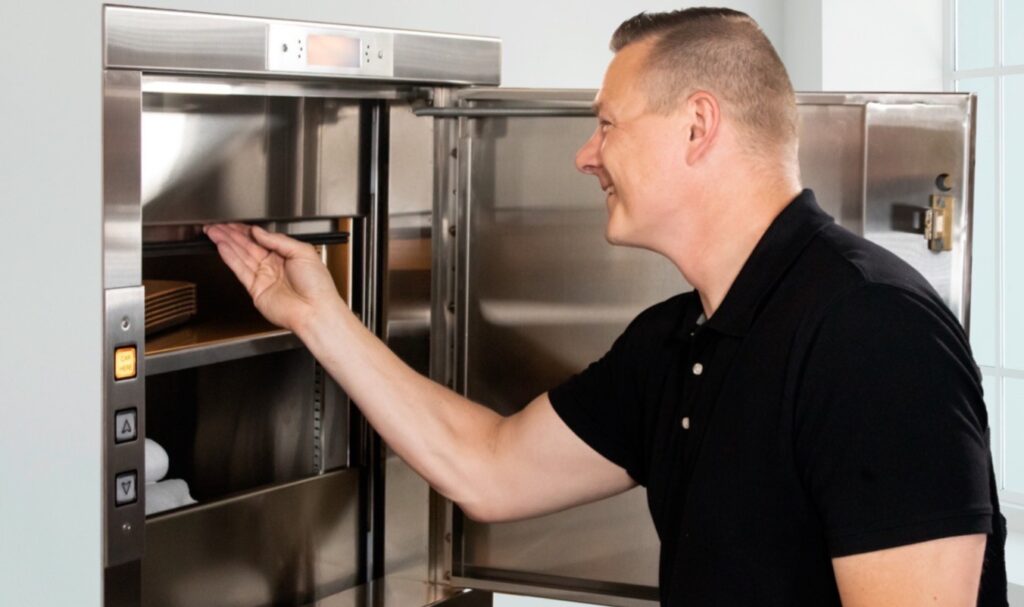
How Does a Dumbwaiter Work?
While early versions looped a rope around a pulley or rafter and required hand-pulling, today’s dumbwaiters are fully electric and require no manual operation.
You can have a dumbwaiter installed in your home that runs on a standard 120-volt current, and it can move up to 200 pounds and travel up to 6 stops. Modern designs can accommodate openings on up to three sides.
For commercial use in restaurants, hotels, etc., you can find dumbwaiters that transport up to 500 pounds. These heavy-duty dumbwaiters can be as large as 12 square feet and 4 feet high.
What Is a Dumbwaiter Used for?
Dumbwaiters can be used in both private and public spaces to improve quality of life and speed up work processes.
In residential applications, dumbwaiters can be used to:
- Help with laundry: Carrying large piles of laundry up and down stairs can prove difficult for anyone. With a dumbwaiter, you can send a heap of dirty laundry down to the laundry room with the push of a button and send it right back to your bedroom once it’s clean.
- Put away groceries: In multi-level residences, you might have to carry heavy groceries from floor to floor to be refrigerated or put in storage, especially if you buy in bulk. A dumbwaiter allows you to send groceries to the proper floor where your pantry, fridge, or other food storage is located.
- Help during a move: Most people find moving to a new residence exhausting. Instead of hauling all your boxes into your new home and up and down stairs, you can put whatever will safely fit in a dumbwaiter into it and let it save you a huge amount of work and strain on your body.
- Transport bulky items: In multi-level homes, dumbwaiters can transport whatever will safely fit, from luggage to packages
Commercial applications of dumbwaiters can be found in:
- Restaurants: Dumbwaiters reduce the amount of manual labor necessary in restaurants by transporting food, trays, and kitchen supplies to different floors.
- Libraries: Books are very heavy, and dumbwaiters help reduce the risk of injuries for library staff members.
- Retail stores: Large retail stores can use dumbwaiters to easily transport inventory from floor to floor to alleviate the burden on employees.
- Hotels: Hotels often use dumbwaiters to move trays of food in their kitchens or restaurants. They may also have a dumbwaiter to transport luggage and a dumbwaiter for laundry and supplies.
- Hospitals: Medical facilities often have kitchens that serve a large population. Dumbwaiters can expedite the process of moving food trays and kitchen supplies. They can also be used to transport trays of medication, equipment, and other healthcare supplies.
- Retirement homes: Dumbwaiters can provide residents with a greater sense of independence by allowing them to move personal effects from floor to floor.
Commercial dumbwaiters can also be used in schools, colleges, universities, churches, law firms, and more.
Benefits of Installing a Dumbwaiter
Dumbwaiters are a useful addition to almost any multi-level property. If you are considering installing some type of lift on your property, you should know that dumbwaiters can be a cost-effective, practical alternative to an elevator.
Benefits of dumb waiters include:
- Safety & convenience: Anyone can benefit from a dumbwaiter, but it’s particularly useful for people with limited mobility or dexterity. A dumbwaiter can greatly reduce the risk of stress injuries or falls from hauling heavy objects up and down stairs.
- Space saving & economical: Dumbwaiters use 50% to 75% less floor space than an elevator and allow users to effortlessly move items from floor to floor. They use less energy than elevators, have a longer lifespan, and require much less maintenance.
- Enhanced property value: The investment in a dumbwaiter boosts the appeal and value of your property to potential buyers because of the increased convenience and accessibility.
Considerations Before Installing a Dumbwaiter
Before installing a dumbwaiter in a residential or commercial property, you need to consider what tasks you want to use it for and select the number of stopping points, the size, the speed, and the finish you want. All of these factors influence the cost of dumbwaiter installation:
- Number of stopping points: A bigger range of travel requires more materials and installation work, which influences the cost of a dumbwaiter.
- Size: Dumbwaiters can have various carrying capacities and car sizes. Commercial dumbwaiters generally have up to 500 pounds of carrying capacity and platform sizes up to nine square feet and four feet high. Residential dumbwaiters generally have up to 200 pounds of carrying capacity and a standard size of 10 cubic feet with larger sizes available. Typical speeds are 30-50 feet per minute.
- Electrical supply: If your dumbwaiter is designed for heavy lifting across several floors, you may need a more extensive electrical setup that can increase the overall costs for dumbwaiter installation.
Contact DME Elevators & Lifts for Expert Dumbwaiter Installation
If you’re interested in installing a dumbwaiter in your home or commercial property, contact DME Elevators & Lifts for guidance on what model would be best for your needs. We’ve been supplying and installing lifts for builders, property owners, and homeowners for over 45 years, and our products have been selected with superior functionality, reliability, design, and value in mind.
Our in-house technicians are rigorously trained to provide dependable installation and maintenance services and keep your lift running smoothly for years to come. Contact us for a free installation estimate or more information about our lifting and mobility products.

